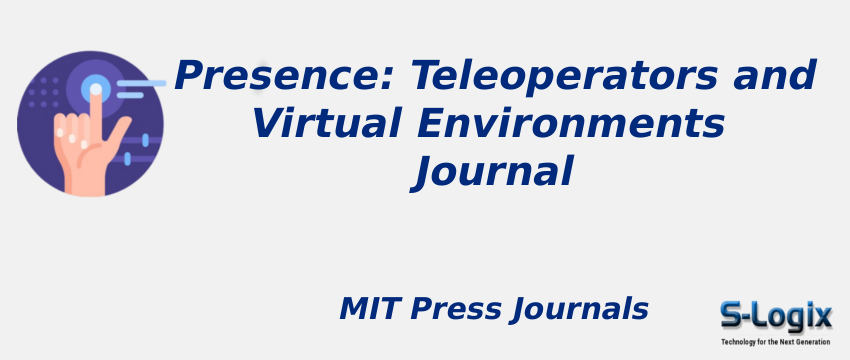Journal Home: Journal Homepage
Editor-in-Chief: Eugene Chng
Print ISSN: 1054-7460
Electronic ISSN: 1531-3263
Abstracting and Indexing: Scopus
Imapct Factor :
Subject Area and Category: Computer Science, Computer Vision and Pattern Recognition, Human-Computer Interaction, Software, Engineering, Control and Systems Engineering
Publication Frequency:
H Index: 105
Q1:
Q2:
Q3: Computer Vision and Pattern Recognition
Q4:
Cite Score: 1.8
SNIP: 0.520
Journal Rank(SJR): 0.321
Latest Articles: Latest Articles in Presence: Teleoperators and Virtual Environments
Guidelines for Authors: Presence: Teleoperators and Virtual Environments Author Guidelines
Paper Submissions: Paper Submissions in Presence: Teleoperators and Virtual Environments
Publisher: MIT Press Journals
Country: United States
